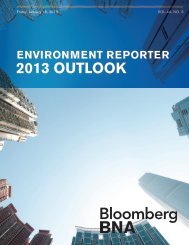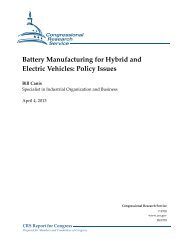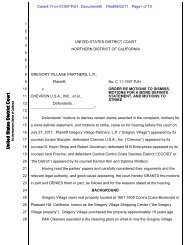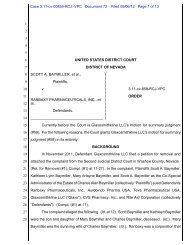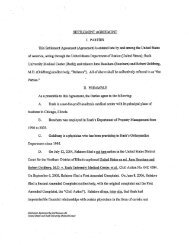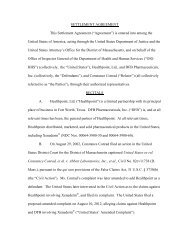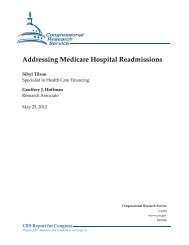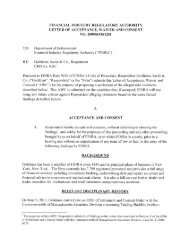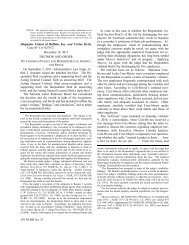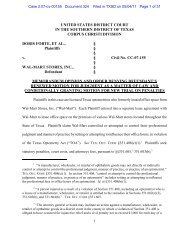Ridge Seneca Plaza, LLC v. BP Prods. N. Am. - BNA
Ridge Seneca Plaza, LLC v. BP Prods. N. Am. - BNA
Ridge Seneca Plaza, LLC v. BP Prods. N. Am. - BNA
Create successful ePaper yourself
Turn your PDF publications into a flip-book with our unique Google optimized e-Paper software.
Case 6:06-cv-06333-CJS -JWF Document 188 Filed 05/03/11 Page 12 of 16<br />
not merely the obligation to exercise care in his purchase but rather to be<br />
omniscient with respect to any fact which may affect the bargain. No practical<br />
purpose is served by imposing such a burden upon a purchaser. To the<br />
contrary, it encourages predatory business practice and offends the principle<br />
that equity will suffer no wrong to be without a remedy.<br />
Stambovsky, 169 A.D. 2d at 260. <strong>Ridge</strong> <strong>Seneca</strong> also cites to Young v. Keith, 112 A.D.2d<br />
625 (N.Y. App. Div. 3d Dept. 1985). In Young, the court wrote:<br />
nondisclosure may constitute a false representation where a party has a duty<br />
to communicate the undisclosed information to the other contracting party<br />
(24 NY Jur, Fraud and Deceit, § 106, at 159). Such a duty can arise when<br />
one party to a contract has superior knowledge which is not available to both<br />
parties (24 NY Jur, Fraud and Deceit, § 108, at 162). As the Court of Appeals<br />
has stated, “Concealment with intent to defraud of facts which one is<br />
duty-bound in honesty to disclose is of the same legal effect and significance<br />
as affirmative misrepresentations of fact” (Nasaba Corp. v Harfred Realty<br />
Corp., 287 NY 290, 295). Considering the allegations that the mobile home<br />
park was sold as an operating business and that the sewer and water<br />
systems’ deficiencies were known by defendants to require very expensive<br />
reconstruction and to pose a threat to the business’ operating license, a duty<br />
to disclose the deficiencies could be found. Plaintiff’s complaint can be<br />
further read to allege that they could not have discovered the deficiencies<br />
through an ordinary inspection and that they would not have purchased the<br />
property had they known of them.<br />
Young, 112 A.D.2d at 626–27.<br />
From these and other cases cited by <strong>Ridge</strong> <strong>Seneca</strong> in its memorandum of law, the<br />
Court concludes that in order to maintain a cause of action for failing to disclose the<br />
existence of the EMG Phase I report, <strong>Ridge</strong> <strong>Seneca</strong> would have to show that First Allied<br />
actively concealed the report or the conditions on which it reported, or, as in the case of<br />
a haunted house,<br />
a very practical problem arises with respect to the discovery of a paranormal<br />
phenomenon: “Who you gonna’ call” as a title song to the movie<br />
“Ghostbusters” asks. Applying the strict rule of caveat emptor to a contract<br />
involving a house possessed by poltergeists conjures up visions of a psychic<br />
or medium routinely accompanying the structural engineer and Terminix man<br />
on an inspection of every home subject to a contract of sale. It portends that<br />
Page 12 of 16



